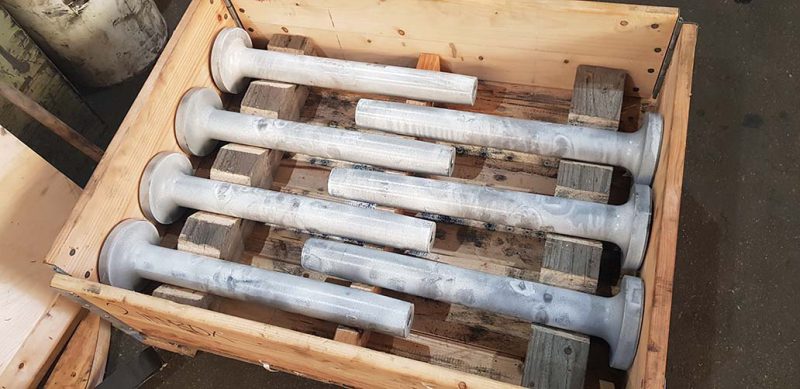
Explore how optimising induction hardening parameters can help your automotive gears. Alpha Detroit is your partner for heat treatment needs in Australia.
Achieving the perfect balance between strength, durability, and wear resistance in crucial components is paramount in automotive engineering. For automotive gears, induction hardening stands out as a reliable and efficient heat treatment process that delivers exceptional results. Here at Alpha Detroit Heat Treatment, we’re dedicated to helping you optimise induction hardening parameters for peak performance in your automotive gears.
What is Induction Hardening?
Induction hardening is a localised heat treatment process that utilises electromagnetic induction to rapidly heat a specific area of a metal component. An alternating current is passed through a coil, generating a strong magnetic field that induces eddy currents within the target area of the workpiece.
These eddy currents, in turn, rapidly heat the metal due to electrical resistance. The key advantage of induction hardening is its ability to precisely control the heating zone, minimising the overall heat-affected zone (HAZ) and preserving the core properties of the material.
Benefits of Induction Hardening for Automotive Gears
Induction hardening is a crucial process in the production of automotive gears, offering several key benefits. The precise control of hardening parameters allows manufacturers to achieve optimal surface hardness whilst maintaining a softer, tougher core. This results in gears with excellent wear resistance and fatigue strength, extending the lifespan of critical drivetrain components.
The localised nature of induction hardening provides distinct advantages over other heat treatment methods. By selectively hardening only the gear teeth and other high-stress areas, manufacturers can minimise distortion and maintain tighter tolerances. This precision contributes to smoother gear operation, reduced noise, and improved overall transmission efficiency in vehicles.
Additionally, induction hardening offers significant production benefits. The process is fast, energy-efficient, and easily integrated into automated manufacturing lines. This leads to higher throughput, lower production costs, and more consistent quality compared to traditional heat treatment methods. The ability to fine-tune hardening parameters also allows for greater flexibility in gear design and material selection, enabling automakers to optimise performance for specific applications.
Optimising Induction Hardening Parameters for Automotive Gears
Induction hardening is a heat treatment process used to increase the surface hardness of metal components, particularly gears in automotive applications. Here’s a more detailed explanation:
1. Process basics: A gear is placed within or near an electromagnetic coil (inductor). • High-frequency alternating current is passed through the coil. • This creates a rapidly alternating magnetic field. • The magnetic field induces eddy currents in the gear’s surface. • These currents generate heat, rapidly raising the surface temperature.
2. Metallurgical changes: The gear’s surface is heated above its austenitising temperature (typically 800-1000°C for steel). • This causes the metal’s crystal structure to change to austenite. • The heated gear is then rapidly quenched (cooled). • This rapid cooling transforms the austenite into martensite, a very hard structure. • The core remains relatively unaffected, retaining its toughness.
3. Advantages for automotive gears: Localised hardening of wear surfaces (e.g., gear teeth) • Minimal distortion compared to through-hardening methods • Improved wear resistance and fatigue strength • Maintained core toughness for impact resistance • Rapid process suitable for high-volume production
4. Key parameters to control: Frequency of the alternating current • Power input • Heating time • Quenching method and intensity • Part rotation speed • Coil design and positioning
Optimising these parameters allows manufacturers to achieve the desired hardness profile, case depth, and overall gear performance while minimising distortion and production costs.
Consulting with a reputable heat treatment provider like Alpha Detroit Heat Treatment can help ensure you select the optimal material and process parameters for your specific gear application. Our team can guide you through the process, ensuring you achieve optimal results for your specific application.
Optimized by: Netwizard SEO
